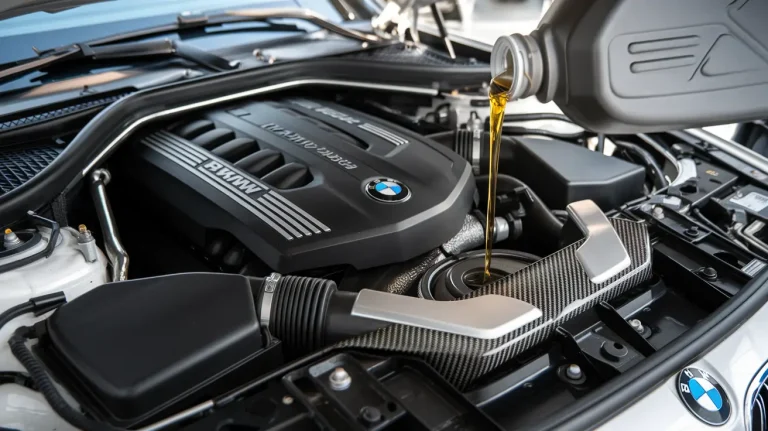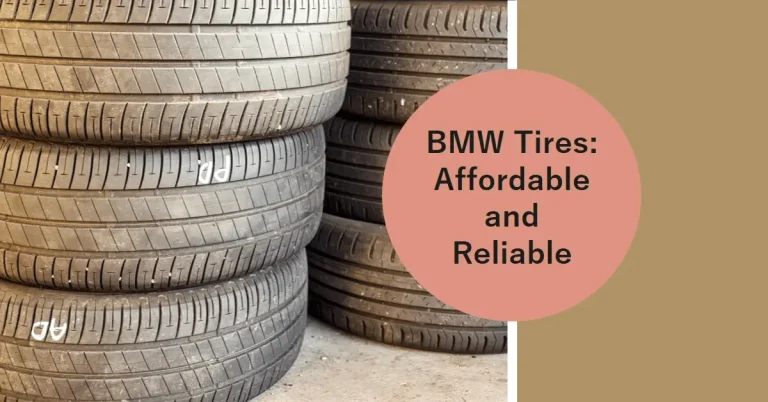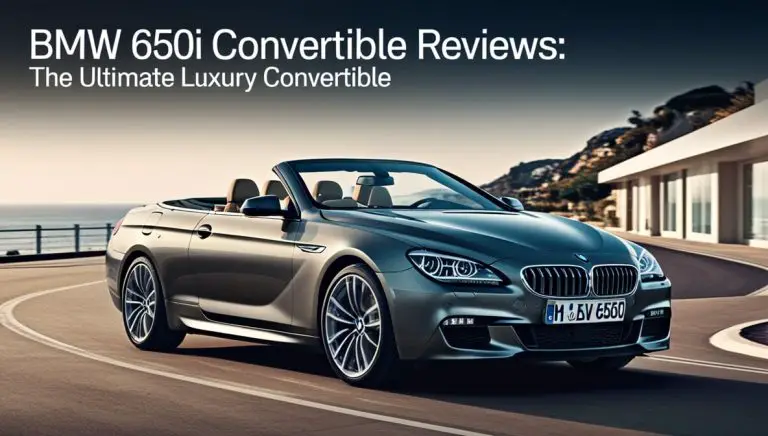Are BMWs Rear-Wheel Drive? The Detailed Answer
BMW is synonymous with luxury and performance. But if you’re considering buying one, you may be wondering: are BMWs rear-wheel drive or all-wheel drive?
Rear-wheel drive has distinct handling advantages on performance vehicles. But all-wheel drive offers more traction and stability in poor weather.
So which drivetrain do BMWs have?
The short answer is that most BMW passenger vehicles are rear-wheel drive. However, BMW does offer both rear-wheel drive and all-wheel drive options depending on the model.
In this comprehensive guide, we’ll cover everything you need to know about BMW drivetrains including:
- The history of BMW rear-wheel drive vehicles
- BMW all-wheel drive models and xDrive system
- The pros and cons of RWD vs AWD on a BMW
- How to tell if a BMW is RWD or AWD
- Why rear-wheel drive matters for BMW handling
- Which BMW models offer both RWD and AWD options
By the end, you’ll understand why rear-wheel drive is an integral part of the BMW driving experience along with which models offer all-wheel drive capabilities.
The History of Rear-Wheel Drive BMW Models
BMW has a long tradition of building rear-wheel drive vehicles dating back to the 1930s.
The BMW 328, introduced in 1936, established BMW’s reputation for agile handling thanks to its innovative rear-wheel drive configuration. This helped make the 328 successful in various road races and rallies in the late 1930s.
Post-World War II, BMW continued innovating around rear-wheel drive performance sedans like the 501 luxury sedan and the small but nimble 502. These set the template for the brand’s future as a maker of driving machines.
The most iconic BMW rear-wheel drive model arrived in 1962 – the BMW New Class 1500. This influential compact sedan established BMW’s identity as a maker of sporting, driver-oriented rear-drive sedans.
The 1968 BMW 2002 turbo then set the blueprint for BMW’s success with turbocharged, rear-wheel drive performance sedans. Even today, the 2002 is considered one of BMW’s most legendary models.
Throughout the 1970s, BMW cemented its reputation with rear-wheel drive sports sedans like the E12 5 Series, E21 3 Series, and the M1 supercar.
The 80s and 90s brought more rear-wheel drive success for BMW with the E30 and E36 3 Series coupes and sedans, along with the E34 and E39 5 Series. These remain hugely popular enthusiast cars today.
Even as the brand has expanded into front-wheel drive compacts and SUVs, the core rear-wheel drive sedans and coupes remain a crucial part of BMW’s lineup. Models like the 3, 5, 7 Series plus the Z4 roadster continue the rear-wheel drive heritage into the 21st century.
BMW All-Wheel Drive and xDrive Models
While rear-wheel drive defines BMW’s sedans and coupes, all-wheel drive is featured on many BMW SUVs and crossovers.
BMW uses the term “xDrive” for its all-wheel drive system. xDrive was introduced in 2000 on the E53 X5 SUV. It rapidly spread across BMW’s lineup of SUVs and crossovers.
Here are some of the key BMW models that offer xDrive all-wheel drive:
- X1 compact SUV
- X2 subcompact SUV
- X3 compact luxury SUV
- X4 crossover coupe
- X5 midsize luxury SUV
- X6 crossover coupe
- X7 full-size luxury SUV
In addition, BMW M high performance models with xDrive include the X3 M, X4 M, X5 M and X6 M.
The xDrive AWD system uses an electronically controlled multi-plate clutch center differential to distribute torque seamlessly between front and rear axles. It’s designed to enhance traction and stability, especially in poor weather conditions.
BMW xDrive models also feature Dynamic Stability Control to improve handling and agility when accelerating through corners. This allows the all-wheel drive BMW SUVs to stay true to the brand’s driving dynamics heritage.
The Pros and Cons of RWD vs AWD on a BMW
So should you choose rear-wheel drive or all-wheel drive on your next BMW? Here are some of the key factors to consider:
Pros of Rear-Wheel Drive:
- Better weight distribution and handling from placing drivetrain components at the rear axle
- More nimble feel and responsive steering
- Rear weight bias allows for controlled oversteer in enthusiastic driving
- Uniquely connected driving experience BMW is known for
Cons of Rear-Wheel Drive:
- Less traction in poor weather like rain or snow
- Increased risk of oversteer in slippery conditions
- Not ideal for off-roading or heavy towing applications
Pros of All-Wheel Drive:
- Enhanced traction and stability in poor weather
- Improved acceleration on slippery surfaces
- Ideal for cold climate or frequent bad weather
- Safer handling at the vehicle’s limits of grip
Cons of All-Wheel Drive:
- Additional weight impacts fuel economy ratings
- Slightly less nimble and connected steering feel
- Understeer can be more prevalent in aggressive cornering
- Components add complexity resulting in higher maintenance
Ultimately, choosing RWD or AWD comes down to your intended use. For driving purists and BMW enthusiasts, the superior handling of rear-wheel drive is preferred. But all-wheel drive provides more confidence and traction in winter conditions.
Both RWD and AWD BMWs offer incredible performance thanks to balanced chassis tuning and advanced stability systems. The right one for you depends on if you prioritize inclement weather traction or an authentic BMW driving experience.
How to Tell if a BMW is Rear-Wheel Drive or All-Wheel Drive
If you’re buying a pre-owned BMW, how can you tell if it’s rear-wheel or all-wheel drive?
Here are a few indicators to look for:
- Model designations – Rear-wheel drive BMWs use odd numbers like 325i or 328i. All-wheel drive models use an x suffix like xDrive35i.
- Exterior badging – BMW RWD models will say “Rear-Wheel Drive” on the trunk. AWD models are badged “xDrive” on the trunk.
- Wheels – Some BMW all-wheel drive models have slightly wider wheel arches to accommodate the wider front track needed for AWD components.
- Owners manual – Check the original owners manual for the drivetrain specifications.
- Car history report – Pay for a vehicle history report which should list the drivetrain in the specifications.
- Test drive – An AWD BMW will feel more planted and understeer more in aggressive cornering compared to a RWD model.
Checking these details will verify if your desired BMW comes with playful rear-wheel drive or added traction from xDrive AWD. This will help match the car to your driving needs.
Why Rear-Wheel Drive Matters for BMW Handling
BMW spent over 80 years perfecting the rear-wheel drive configuration to deliver incredible handling and driving dynamics. Here’s why it matters so much:
Weight Distribution
The front-engine, rear-wheel drive layout creates a near perfect 50/50 weight distribution. This gives BMWs neutral, balanced handling.
By placing the engine and transmission up front but driving the rear wheels, weight is evenly spread between the front and rear axles.
This even weight balance is one of the secrets to BMW’s agile handling. Under hard cornering, the front and rear tires share the load evenly to maximize grip.
Steering Response
Rear-wheel drive BMWs have fantastically responsive steering. By removing drivetrain components from the front axle, it lightens the front of the car.
The lighter front axle requires less steering effort to turn quickly and precisely. This gives BMW steering its laser-focused, dialed in feel.
Rear Weight Bias for Control
The rear-wheel drive layout also places more weight over the rear tires. This rear weight bias is key to BMW’s handling magic.
When accelerating out of a corner, the extra rear grip resists oversteer and keeps the rear planted. But if desired, the driver can induce power oversteer in a controlled manner.
This lets drivers experience the joy of getting the rear wheels to gradually slide during enthusiastic driving. It makes BMWs so rewarding to drive at their handling limits.
In summary, rear-wheel drive gives BMWs near 50/50 weight distribution, unparalleled steering response, and the ability to control weight transfer and oversteer – key traits that make BMW the ultimate driving machine.
BMW Models Offering Both RWD and AWD Options
While most BMW sedans and coupes are exclusively rear-wheel drive, some models give you the option to choose between RWD or AWD.
If you want a blend of BMW’s rear-drive heritage with all-wheel drive traction, here are the main models offering both configurations:
BMW 3 Series – The iconic sports sedan provides perhaps the purest expression of BMW’s driving character. The 330i is rear-wheel drive while the 330i xDrive adds all-wheel drive.
BMW 4 Series – This stylish coupe and convertible is available as the rear-drive 430i or all-wheel drive 430i xDrive.
BMW 5 Series – The executive class BMW sedan offers a balance of comfort and agility. Choose between the 540i RWD or 540i xDrive models.
BMW 7 Series – BMW’s flagship sedan focused on rear seat luxury. The base 750i is RWD but the 750i xDrive brings AWD grip.
BMW X3 – BMW’s popular compact luxury SUV offers a choice between sDrive RWD or xDrive AWD configurations.
BMW X5 – This mid-size SUV combines versatility with BMW driving dynamics. Available as the X5 sDrive40i RWD or X5 xDrive40i AWD.
This range of models means you can experience BMW’s legendary rear-wheel drive feel along with the confidence of all-wheel drive when desired.
The options let you customize your new BMW purchase to match your driving needs and weather conditions.
In Summary: Most BMWs Are Rear-Wheel Drive
We’ve covered a lot of ground explaining BMW drivetrains. To recap:
- Rear-wheel drive is an integral part of BMW’s engineering heritage dating back over 80 years. Most BMW sedans and coupes are exclusively RWD.
- However, BMW SUVs and crossovers utilize xDrive all-wheel drive for added traction and stability.
- Rear-wheel drive excels at responsive handling and weight balance. All-wheel drive provides more traction in rain, snow, or off-road use.
- Several BMW models give you the choice between RWD or AWD configurations.
- Knowing the pros and cons helps you select the optimal drivetrain for your driving priorities.
While embracing all-wheel drive technology, BMW has never lost sight of its rear-wheel drive roots which make driving a BMW so special.
The focus on rear-wheel drive agility, precision, and control is central to the BMW ethos of building the “Ultimate Driving Machine”. It’s why driving enthusiasts are so passionate about these incredible performance automobiles.






